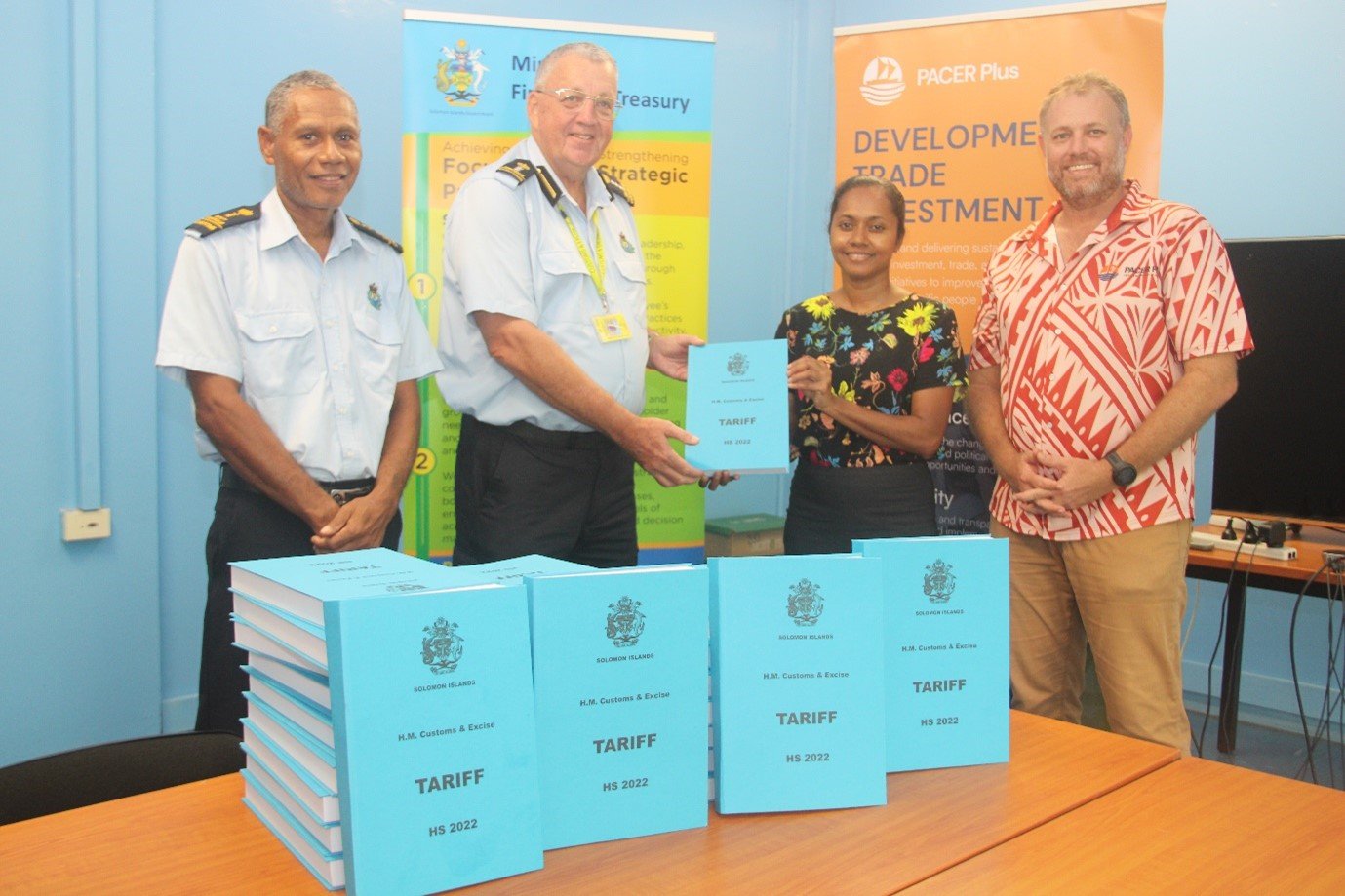
MFAET hands over printed copies of Harmonized System 2022 edition to Customs and Excise Division.
The Ministry of Foreign Affairs and External Trade handed over printed copies of the Harmonized System (HS) Nomenclature 2022 to the Solomon Islands Custom and Excise Division this week in Honiara.
The availability of the books was made possible through funding by the Development and Economic Cooperation Work Programme, as part of the Pacific Agreement on Closer Economic Relations (PACER) Plus. The PACER Plus Implementation Unit (PPIU) is based in Apia, Samoa.
Ms. Natalia Patternot, Director External Trade and Mr. Luke Marston, Design and Development Adviser, PACER Plus Implementation Unit, delivered copies of the HS 2022 to Mr. Peter Hughes, Comptroller of Customs and Excise on Monday (11th March 2024).
The Harmonized System is revised every five years, the HS 2022 entered into force on 1st January 2022, becoming the seventh edition of the Harmonized System Nomenclature.
It is used worldwide for the uniform classification of goods traded internationally, and has been accepted by all Contracting Parties to the Harmonized System Convention.

Director of External Trade, Ms. Natalia Patternot skimming through a copy of the Harmonized System (HS) Nomenclature 2022 with Stuart Millen from Customs and Excise.
More than 200 countries currently use the Harmonized System as a basis for their national customs tariffs and is also used as a basis for the collection of international trade statistics, trade negotiations and rules of origin, and the monitoring of controlled goods.
This document is crucial not only for the Customs and Excise Division but also for partners in the private sector as local traders will be able to access the duty rate applied on the various products they would like to import or export as classified under the various chapters of the HS.
The International Convention on the Harmonized Commodity Description and Coding System (HS Convention) was entered into force on 1 January 1988 with three objectives:
- to facilitate international cross-border trade and the collection, comparison, and analysis of statistics by harmonizing the description, classification, and coding of goods in international trade;
- to reduce the expenses related to international trade; and
- to facilitate the standardization of trade documentation and the transmission of data.
ENDS//
–MFAET PRESS RELEASE
